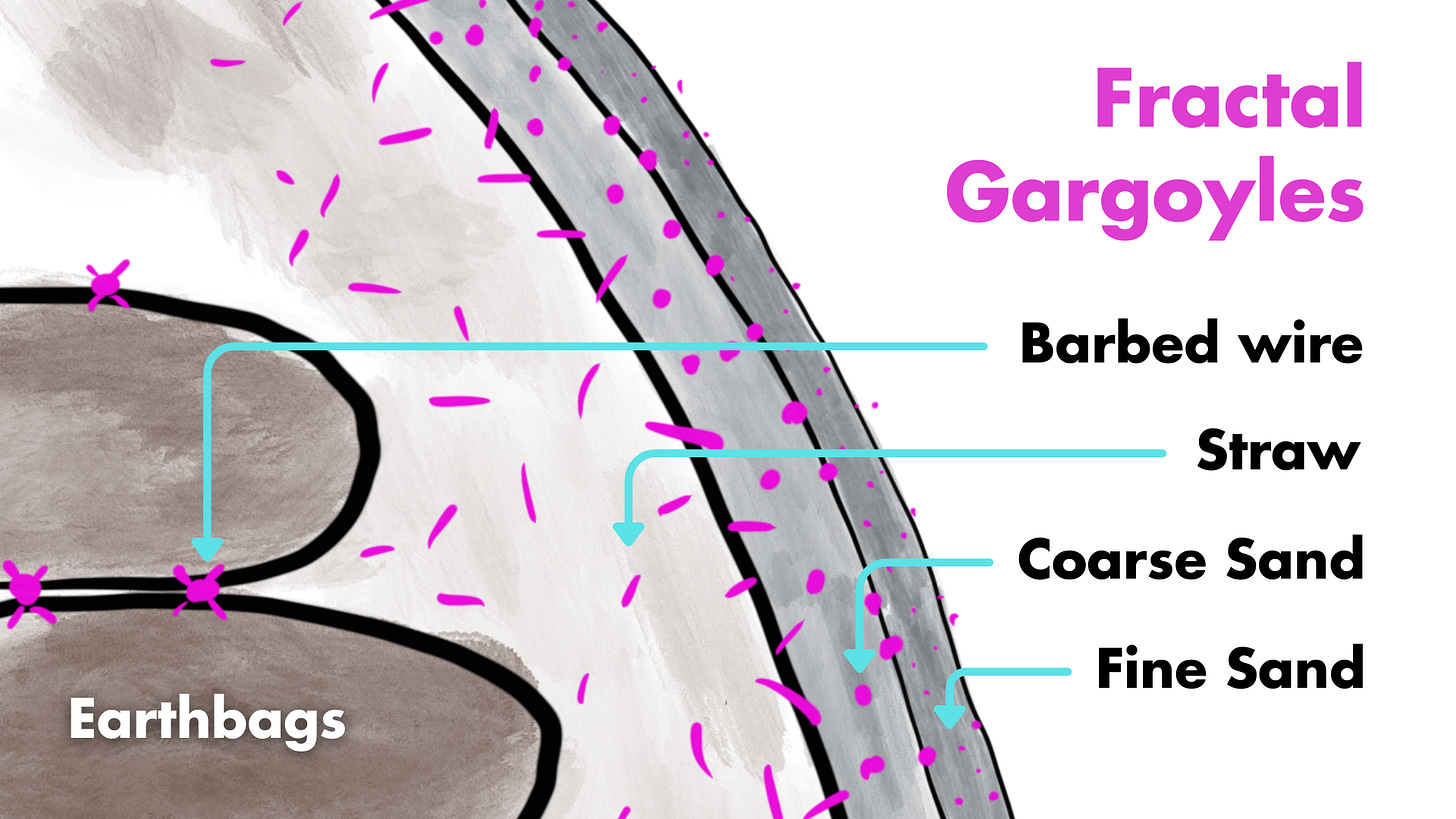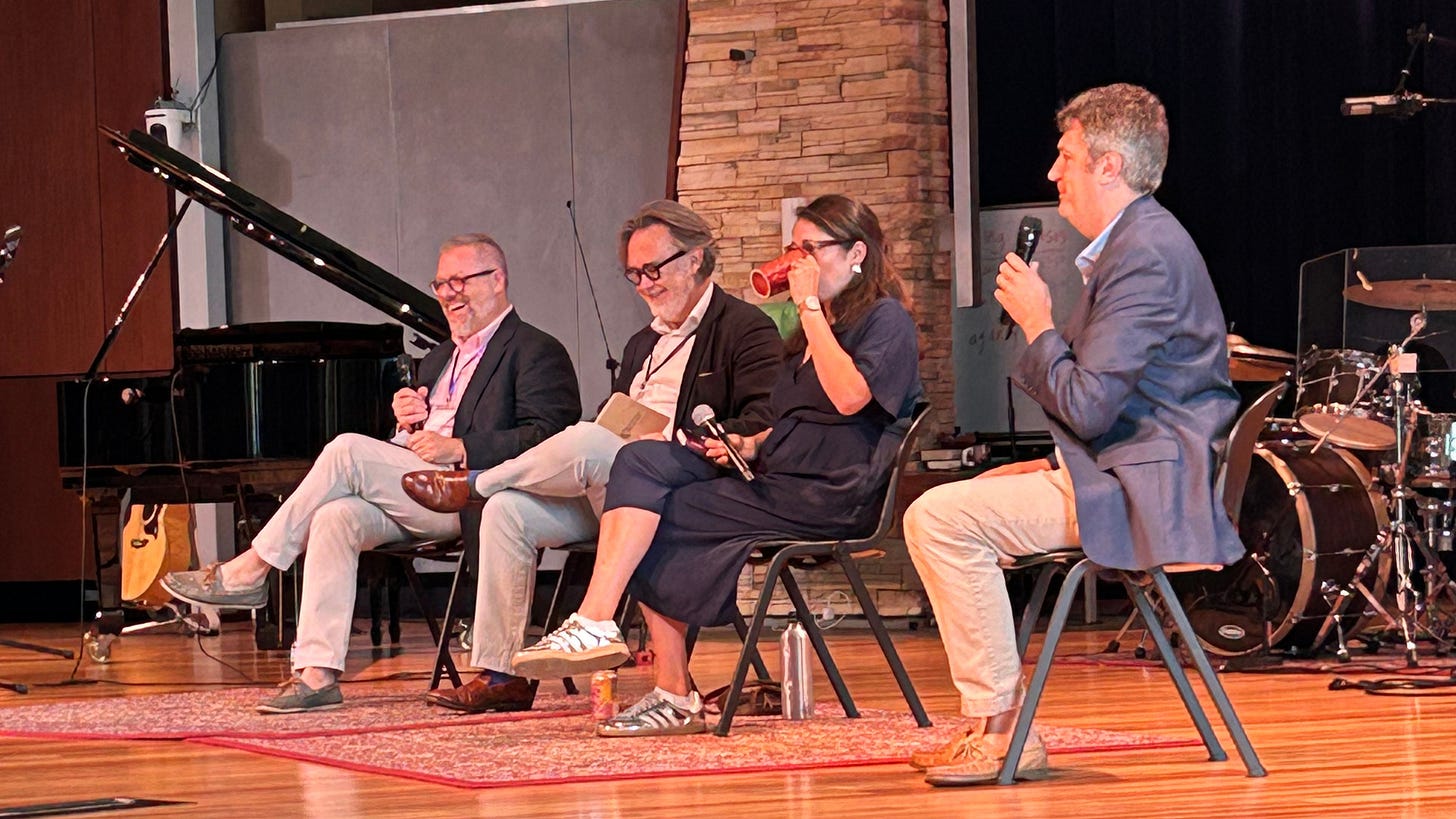Gargoyles at the Belongapocalypse: Notes from Midwestuary
Midwestuary Conference Chicago, 2025
Aftershock: The Belongapocalypse
I barely had time to pee—which became the only window to text my wife to confirm we were still married. Conversation was a rip current, and my extrovertedness got swept up in it all. I can’t believe I only took two photos the entire weekend. After Christian Baxter’s recap, I joked that a belonging bomb had gone off. Matt (@skankenstein) replied, “Belongapocalypse!” and the name stuck. America’s trust is dissolving, and this weekend felt like a reversal.
I’ve never been around such a dense population of conservatives who are high in openness. That combination of opposites creates sparks that make conversation irresistible, hence forgetting to pee. Midwestuary was mostly internet nerds meeting IRL—some OGs, many first-timers—drawn from This Little Corner (TLC). And there were a lot of boundary-keepers, gargoyle types. You know who you are. I’m one of you.
Straw Gargoyles: How Boundaries Build Trust
A couple of years ago, I built an earthdome in my backyard—earthbags, barbed wire, and plaster. While mixing the first rough coat of plaster, I was listening to Jonathan Pageau on gargoyles—the creatures on edges. As I smeared mud (clay, sand, straw, water), it hit me: the straw is gargoyle. They stick out at the boundary of each coat, forming teeth that let the next layer key into the last. As you move toward the finish coat, the gargoyles get subtler: straw to coarse sand to fine sand to paint, until you can’t see them, but they’re still doing the holding.
Am I a gargoyle? I live at the border of sincerity and play, and it scares some people while welcoming others. My conservative friends think I’m a flaming liberal; my liberal friends think I’m sleeping with the enemy. But trust requires risking reputation and pushing on each other’s edges to see if they hold.

Notice those straw ends. They add tensile strength to the coat while also beckoning the next layer. Maybe gargoyles scare us because they mirror the monsters in our dreams. The built-in response to these monsters that are part of us is to fight, flee, or freeze. It takes a bit more effort to integrate them in a way that keeps them from drawing blood. It was settling to see so many boundary-dwellers finding a home in this space.
Once you learn to spot boundary creatures, you see them everywhere. Trust is built at the boundary.
Three Thresholds Where Trust Formed
Elizabeth Oldfield
In our post-World War II consensus-baby boomer-sincerity culture, you’re not supposed to talk about difficult things like immigration with people you don’t already agree with. But in a hot moment on a panel about this very topic, Sam Tidman (facilitator) artfully raised the level of heat when he sensed that the group could handle it. Rod Dreher framed the danger, and then Elizabeth Oldfield did something spectacularly unusual. While Rod was still speaking, she slipped off her shoes, crossed her legs, and, when it was her turn, asked to pray. I teared up a little as she spoke from her heart, partly because of her words and partly because of her courage to break from the memetic pattern that she named in her keynote: “Debate is blood sport, and being right is an addiction.” After that exchange, the room, and maybe the entire conference, softened a bit without losing its edges. You really can’t compare the level of trust between people who actively disagree but stay bonded in friendship with those who avoid conflict.

Estuary Pitch, Point, Play
Estuary (noun): where fresh and salt water meet (often choppy).
Estuary conversations, developed by Paul Vanderklay, invite boundary creatures. The format is simple: Pitch, Point, Play. Everyone pitches a topic; then we point to someone else’s—no self‑votes—so the group selects what has juice; then we play, with a moderator ready to jump in and firm up the boundary when needed. Structure invites, merit sharpens, vulnerability binds. Again, trust at the boundary.
The Bridge Bonk
On day one, Dan, Sam, and I decided to Indiana Jones a flooded park trail instead of Ubering. Mid conversation, I hoisted myself up on a wall straight into a low-hanging bridge beam—bonk! Then a chain‑link fence ripped my shorts. Thresholds are funny and sometimes unforgiving, but I am grateful for that humbling moment because it rattled me the entire morning. It forced me to rely on my friends to check on me in case there was some latent brain injury. It also motivated me to get pain relief for my headache. A lovely volunteer provided some aspirin. Another small way trust got built at the boundary.
Teeth: Edges That Protect Trust
Gargoyles aren’t misfits to be pitied. They are holy and useful. They hold weirdness long enough for opposites to find harmonic resonance: the particular with the universal, connection with differentiation, poop with roses. Learning not to recoil takes practice.
These days, when I meet a gargoyle, my disgust response is tempered by my experience in seeing and feeling the straw in plaster squishing between my fingers. I’ve come to appreciate the antifragile quality of fiber that strengthens the wall while offering attachment points for what’s wild at the edge. Edges protect the form, and without them, belonging dissolves at the first heavy rain.
Practice: Estuary at the Speed of Trust
We’re in a post‑truth era where institutions wobble and sincerity LARPing is everywhere. Truth on its own becomes clanging cymbals, and without goodness and beauty, nobody can find the beat. What I keep finding in these gargoyle types is that, once you get through the playful hazing, there’s often a kind and generous person underneath. Often, they talk in riddles and metaphors, which is spooky to a culture that only speaks the language of butterflies pinned to corkboards.
Aidan Hart, Orthodox iconographer, once said, “Salvation is going from an individual in isolation to a person living in community.” That’s the arc I see here: lurking → commenting → breaking the fourth wall on screen → breaking it in person—the cosmic evolutionary process of moving “…from glory to glory.” At every fractal threshold, you find gargoyles of challenge-and-support operating at the speed of trust. Huge thanks to Pastor Paul Vanderklay for setting all of this in motion.
If the Belongapocalypse hit you too, hop on my YouTube live stream. I host small, Estuary‑influenced TLC‑esque sessions—more on the sharing and creativity side, disagreement welcome. Bring a topic, a poem, or an interpretive dance. We’ll bring the gargoyles. Sign up here for joining instructions.



This is beautiful, Rigel. Your substack is criminally under-followed.